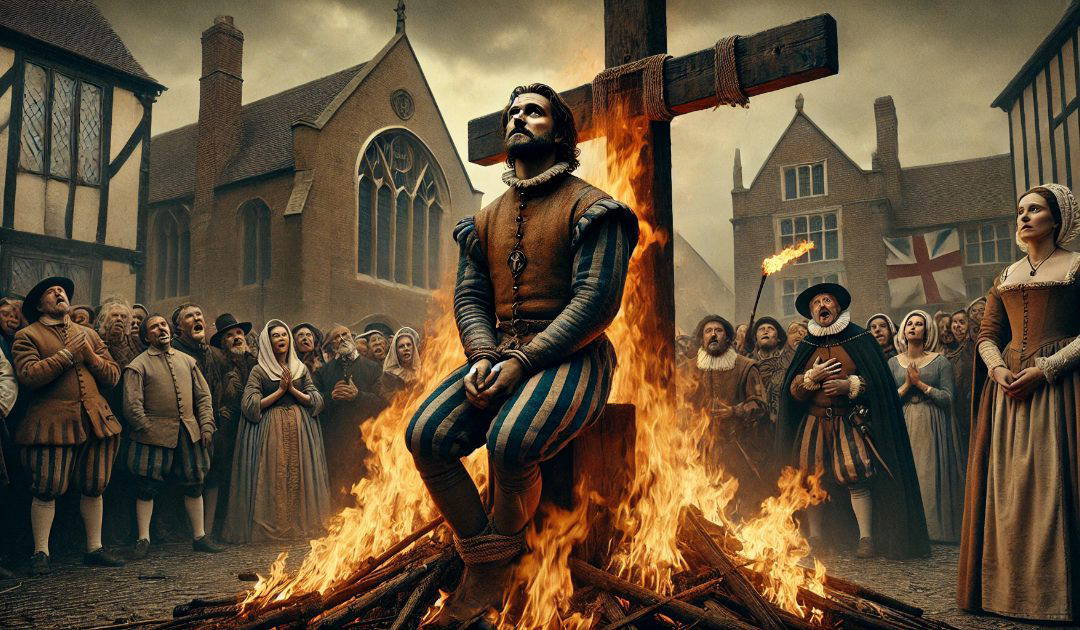On 4th February 1555 John Rogers, a reformer and bible translator, was the first Protestant to be burnt at the stake at Smithfield by Queen Mary I, Bloody Mary, as she has come to be known.
I have finished reading A Woman of Noble Wit, by Rosemary Griggs, and posted a review in Readers Club. Her heroine, Katherine Raleigh, held a vigil with Exeter martyr Agnes Prest, also a victim of Bloody Mary.
John Rogers (c. 1505-1555) was an English clergyman and reformer who became the first Protestant martyr executed under the reign of Mary I of England, known as “Bloody Mary”. His life and death were emblematic of the religious turbulence during the Tudor era.
Born around 1505 in Deritend, Birmingham, Rogers was educated at Cambridge University and later ordained as a Catholic priest. However, while serving as a chaplain in Antwerp, he encountered William Tyndale, the renowned Bible translator and reformer. Under Tyndale’s influence, Rogers embraced Protestantism, rejecting many Catholic doctrines, including transubstantiation and the authority of the Pope.
John Rogers collaborated with Tyndale in translating the Bible into English. After Tyndale’s execution in 1536, Rogers compiled and published the Matthew Bible in 1537, a combination of Tyndale’s and Myles Coverdale’s translations. The Matthew Bible became a cornerstone of Protestant efforts to make the Scriptures accessible to English-speaking Christians. Rogers published the Bible under the pseudonym “Thomas Matthew” to avoid persecution.
During the reign of Edward VI (1547-1553), a Protestant monarch, Rogers returned to England and became a prominent clergyman. He was appointed the vicar of St. Sepulchre’s Church in London and a prebendary of St. Paul’s Cathedral. Rogers gained a reputation for his zealous sermons, advocating for Protestant reforms and denouncing Catholic practices.
When Mary I, a staunch Catholic, ascended the throne in 1553, she sought to restore Catholicism in England. Protestants like John Rogers faced immediate persecution. Rogers preached one final sermon warning against the dangers of abandoning Protestantism before being arrested.
In January 1554, he was imprisoned in Newgate Prison. Refusing to recant his Protestant beliefs, Rogers stood trial in January 1555. He boldly defended the authority of Scripture over church traditions and rejected Catholic doctrines like the Mass. His steadfastness infuriated his Catholic judges, sealing his fate.
On 4th February 1555, John Rogers was burned at the stake outside St. Bartholomew’s Church in Smithfield, London. He was offered a final chance to recant but refused. His wife and ten children watched as he became the first Protestant martyr of Mary’s reign.
John Rogers’ execution ignited Protestant resistance and inspired later reformers. His story was immortalized in John Foxe’s Book of Martyrs, which portrayed him as a hero of faith. Rogers’ courage and sacrifice remain a symbol of religious conviction and the struggle for freedom of belief.

